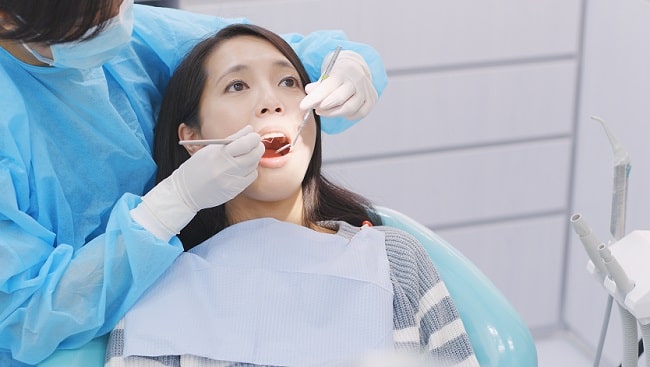
Wisdom teeth often spark concern and questions. These third molars appear in late adolescence or early adulthood. Many assume removal is mandatory. That belief can lead to anxiety and extra visits. In truth, care plans vary. This post looks at the factors that guide treatment, highlights local options, and gives clear advice for those who face decisions about these back teeth.
What Are Wisdom Teeth and How Do They Behave?
Wisdom teeth in Melbourne emerge at the back of each dental arch. Some jaws provide space and a favorable angle. In these cases, molars align with surrounding teeth. Others face crowding or misalignment. Pressure on nearby roots or bone can lead to discomfort or risk. Regular X rays allow a dentist to track position and health. Observations guide the next step, which might involve removal or simple observation.
Signs That Removal Might Be Unnecessary
Not every wisdom tooth demands extraction. A tooth that sits fully upright, has healthy surrounding gums, and has no signs of decay or infection can remain. If chewing surfaces match those of other molars and if nearby teeth stay healthy, a dentist may recommend watchful care. Annual checkups and periodic imaging serve this approach. That strategy reduces the chance of an unneeded operation and preserves natural tooth function.
When Extraction Becomes Advisable
Intervention gains urgency when a wisdom tooth pushes on adjacent roots, lodges at an awkward angle, or triggers repeated gum inflammation. Crowded molars raise the chance of decay in hard-to‐clean areas. Persistent pain, recurrent infections, and cyst formation around an impacted tooth also call for removal. A dentist evaluates X rays, oral exams, and patient feedback to build a safe plan. Coordination with an oral surgeon happens if a complicated case arises.
Alternatives to Immediate Surgery
In many cases, a dentist recommends local treatment options before removal. Deep cleaning of pockets around the wisdom tooth can relieve gum irritation and stave off infection. Application of medicated mouth rinses or short courses of antibiotics can clear acute symptoms. If growth remains stable, a care team can continue to track the tooth without interrupting daily life. That path suits patients who prefer to delay extraction until a clear need appears.
Planning for Professional Care in Melbourne
Finding a skilled team is crucial. Clinics that list Wisdom teeth removal Melbourne services often combine general practice with oral surgery. Patients benefit from a team that communicates clearly and offers flexible appointment times. Online reviews and local directories help identify practices with high patient satisfaction. Clear discussions about procedure steps and recovery timelines give confidence and reduce stress before any decision.
Understanding the Financial Side
Cost estimates can show variation. An initial consultation sets the stage. Simple removal might involve a single tooth pulled in a standard office visit. More complex cases require surgical access under sedation or general anesthesia. Patients can compare figures for Wisdom teeth removal cost Melbourne in order to budget appropriately. Many clinics break down fees into consultation, imaging, anesthesia, extraction, and postoperative care for full clarity.
Navigating Fees and Budget Options
For households on a tight budget, options exist. A growing number of practices promote affordable wisdom teeth removal Melbourne to meet community needs. Some clinics run special weeks that discount surgical fees or pair extraction appointments with no-interest payment plans. Local healthcare networks sometimes offer support schemes that reduce out-of-pocket expenses. Call ahead to ask for a detailed quote for wisdom teeth removal Melbourne cost before scheduling any service.
Finding Value without Sacrificing Quality
Savings can come without downtime in professional standards. A handful of well-rated practices promote cheap Wisdom teeth removal Melbourne packages that maintain safety protocols and patient comfort. These clinics might limit supply costs by streamlining instruments or share resources among multiple specialist teams. Patients who shop around and read testimonials can find a balance of cost-effective care and experienced clinicians.
Post-Extraction Recovery
For patients who move forward with removal, recovery follows a predictable path. A gentle rinse with warm saline reduces swelling after the first day. Soft foods and plenty of fluids support healing. Stitches, if used, often dissolve on their own. Dentists typically schedule a follow-up two weeks after extraction. That visit confirms that gum tissue has closed properly and that no complication took place.
Long-Term Outlook
For those experiencing no trouble and who keep wisdom molars intact, long-term results can be positive. Proper brushing, flossing, and routine dental exams keep these third molars healthy into middle age. In select cases, a tooth once thought trouble-ridden can prove stable when reviewed periodically. The key lies in an open dialogue with dental care providers, paired with personal vigilance in home oral care.
Making the Right Decision for You
An informed choice rests on ongoing assessment and an honest discussion of risks and rewards. Extraction carries a short-term recovery period. Retention carries a promise of a full complement of natural teeth but demands commitment to monitoring. Speak freely with your dentist, ask about local resources, and weigh costs against clinical findings. That approach leads to a plan that respects personal needs and dental health goals.
Decisions about third molars need not follow a one-size-fits-all script. Many find a path that avoids removal without sacrificing smiles. Others take advantage of safe, cost-effective extraction when the situation calls. With accurate data, open communication, and solid support, each patient finds a route that fits life, budget, and oral health. Success comes from understanding options and acting in harmony with professional advice.
